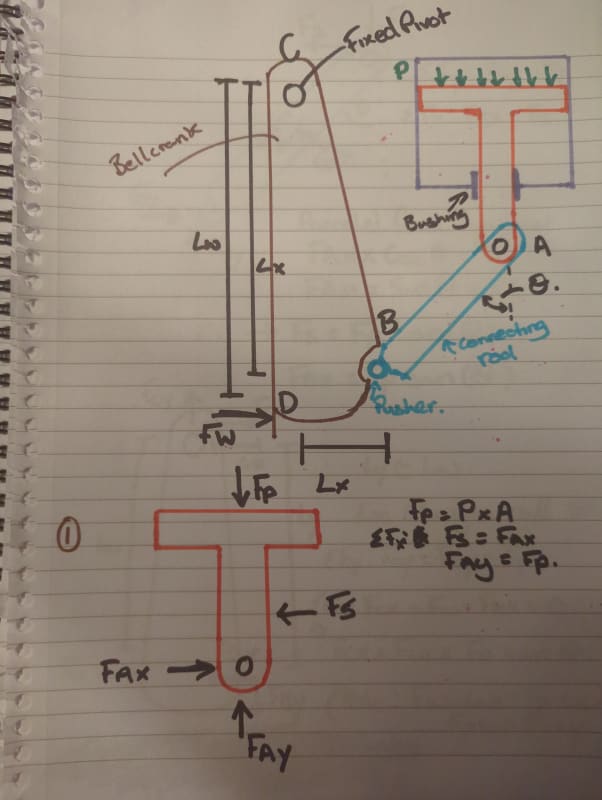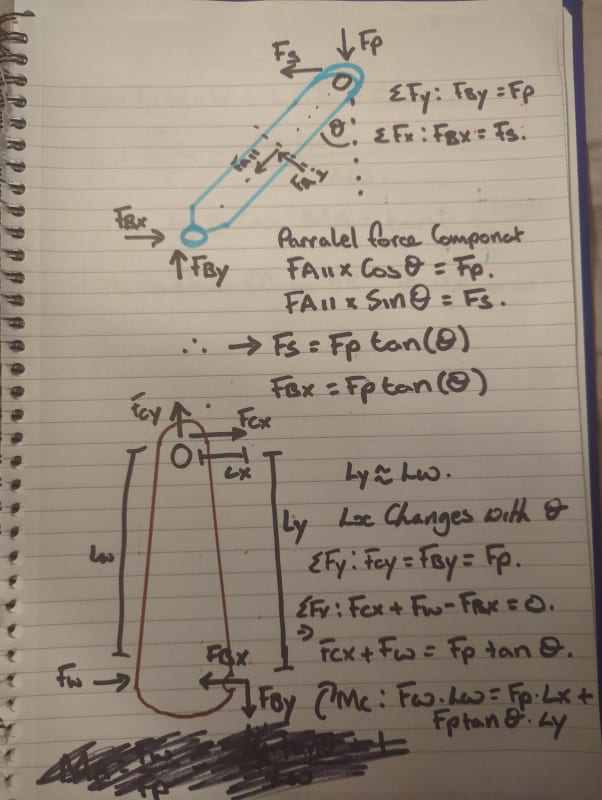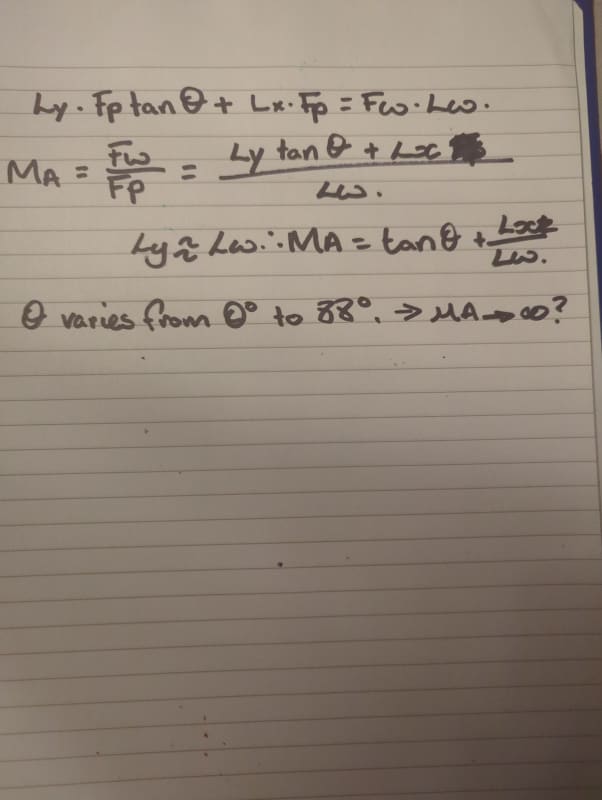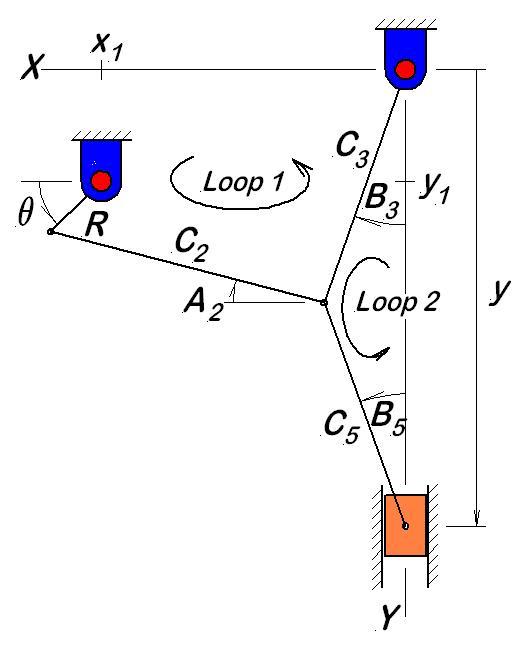Hi all,
I've really been struggling to come to determine a formula which calculates the mechanical advantage of a system.
The system is a vertical pneumatic piston which actuates a connecting rod, pushing a bell crank to push against a wall.
I need to determine the mechanical advantage (wall force / piston force) based on the changing geometry. I've derived an equation which states that the mechanical advantage is proportional to tan(q). The piston can actuate up to a connecting rod angle of 88 Deg based on the distance of the crank to the wall. I don't know where his is going wrong. I've attached my derrivation.



I've really been struggling to come to determine a formula which calculates the mechanical advantage of a system.
The system is a vertical pneumatic piston which actuates a connecting rod, pushing a bell crank to push against a wall.
I need to determine the mechanical advantage (wall force / piston force) based on the changing geometry. I've derived an equation which states that the mechanical advantage is proportional to tan(q). The piston can actuate up to a connecting rod angle of 88 Deg based on the distance of the crank to the wall. I don't know where his is going wrong. I've attached my derrivation.




